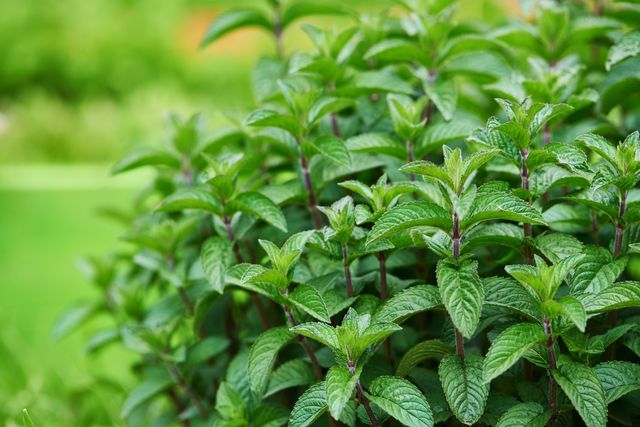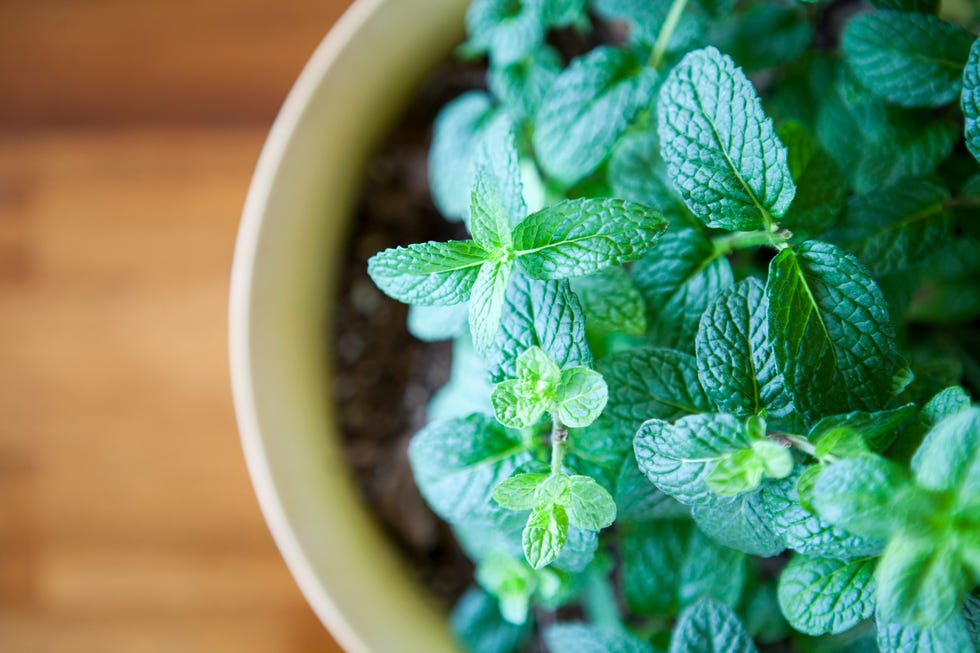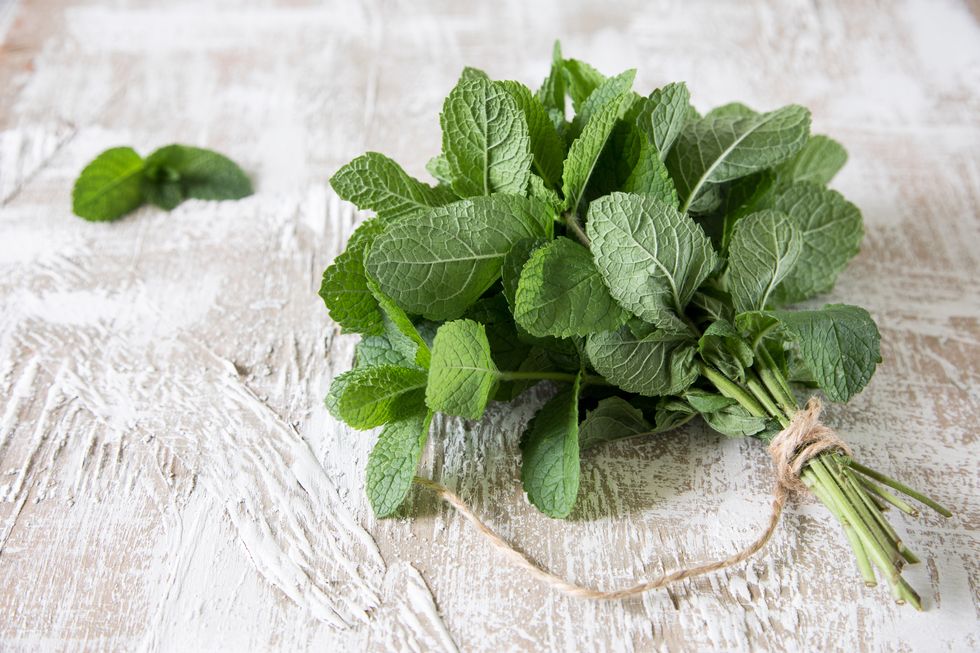Mint is a perennial herb with squared, four-sided stems with opposite leaves and small-lipped flowers. All parts of the plants are pungent.
Most mint plants spread rampantly, forming a thick mat of spreading stolons (creeping underground stems) just under the surface of the ground. This is why you should always plant mint containers — even in the garden — to keep it from running amok. Aboveground, the plants produce 2- to 3-foot upright stems. Most do well in USDA Plant Hardiness Zones 3 to 8, but check the specific species you want before buying.
Types of Mint
The genus Mentha has many cultivars, and it's worth growing several varieties since so many foods taste better with a touch of mint. While peppermint and spearmint are the most familiar, herb gardeners can also grow the furry apple mint, orange mint, and the popular chocolate mint. The moss-like Corsican mint is an attractive creeper, good between paving stones or in the rock garden.
Growing Mint
All mints prefer a cool, moist spot in partial shade but will also grow in full sun. Mint is extremely variable from seed. Instead, order plants from a reputable source or visit a nursery to find plants whose flavor and aroma appeal to you.
One plant of each cultivar you select will soon provide more than enough mint for home use — the big problem is keeping them from overrunning all neighboring plants. To avoid this, plant mints in bottomless containers that are at least 15 inches deep and sunk in the ground with one or two inches protruding above the soil surface, or plant above the ground in tubs and barrels.
Harvesting Mint
Snip leaves or sprigs as needed. To harvest in quantity, cut stems to within an inch or so above the ground. You can make several harvests, depending on the length of the season. Hang mint in loose bunches to air dry, or dry individual leaves on a tray in a food dehydrator. Freeze your mint harvest for later in self-sealing bags.
Using Mint
Enjoy aromatic mint teas hot or iced — like this great recipe for minty iced tea with a little fresh-squeezed lime juice. Peppermint tea, a centuries-old remedy, can calm an upset stomach. Add chopped fresh leaves to lamb, rice, salads, or cooked vegetables. Don't forget about mint-infused cocktails and peppermint-flavored desserts, either.















